These dangling beautiful flowers of Aquilegia canadensis can be found in late spring and early summer. They go by common names of red columbine or eastern columbine or just wild columbine.
Flowers
Flowers:
The eastern columbine delicate flowers dangle from slender stems hanging almost upside down. They are red with some yellow. The red parts are sometimes different shades of red or pink. The bisexual flowers are 1 to 2 inches long including the exerted stamens and pistils. The flower structure is distinctive and somewhat confusing.
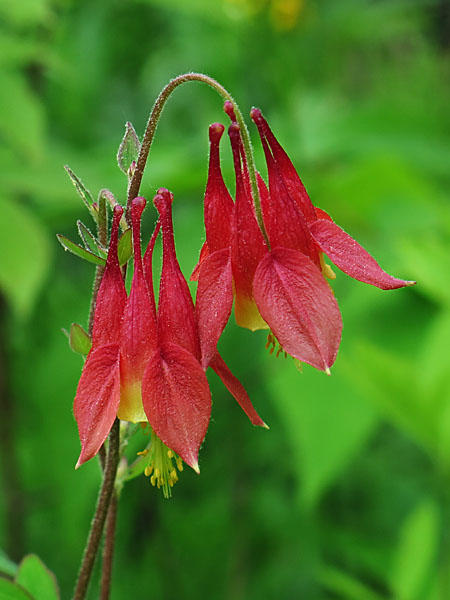
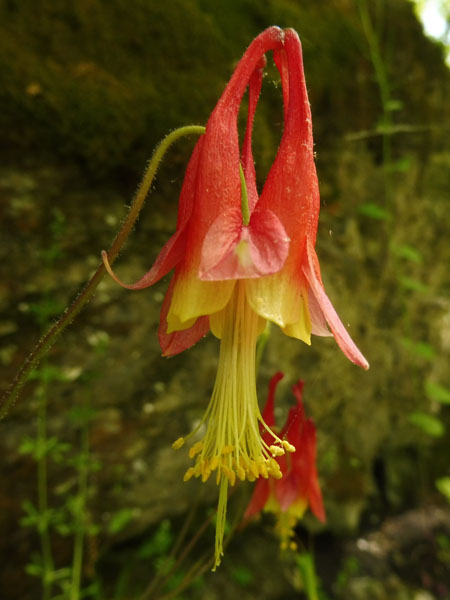
In the photo below: the blue arrow points to the flower stalk and its attachment to the flower. At the attachment, are the sepals (yellow arrow). There are 5 red sepals just outside of 5 petals. The 3 green arrows point to a single petal.
Each petal is curled into a hollow tube that narrows and closes at the top forming a spur with a knob at the end. The knob is slightly curved inward. The lower end of the petal tube is open and flares with a yellow tip.
The knob of the spur is nectar filled and the opening at the bottom of the petal allows access by long tongued nectar feeders. Note that the spur is narrow before the nectar knob preventing access by small insects.
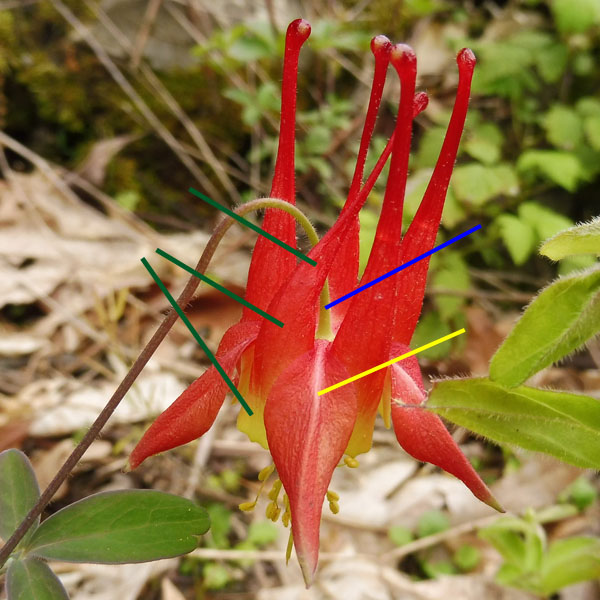
In the photo below it is easier to see the petal with a sepal on either side. Also seen are the exerted stamens and the styles/stigmas that extend well beyond the anthers.
Extending below the petals & sepals are the stamens and pistils.
Usually, there are 5 carpels (pistils). The pistils are not fused. There are many stamens in whorls of five and some staminodes.
In the insert, one of the stigmas is obviously bifurcated. Usually the completely open bifurcated surface is receptive to pollen. The anthers appear to have already dehisced (releasing pollen).
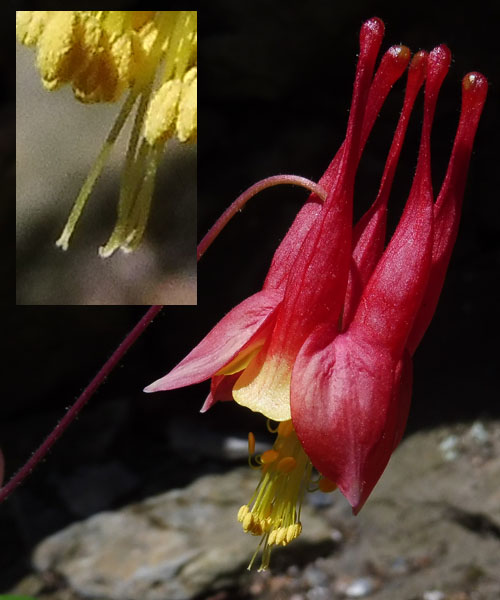
A look into the throat of the flower in the photo below: The 5 petal tube openings are seen where long tongued nectar feeders can access the nectar way into the end of the spur. The petal tubes are joined along their sides to the inner whorl of stamens and pistils.
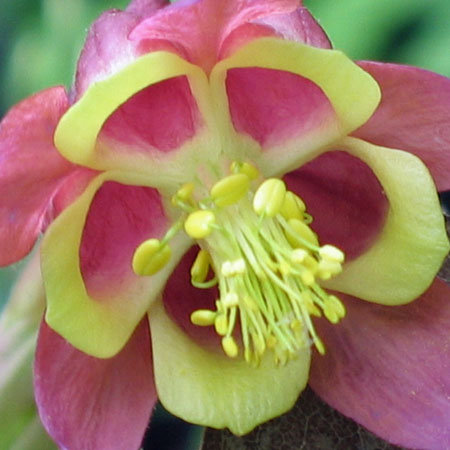
Early stage flower: The anthers have not yet completely uncurled and are still immature. The style/stigmas are long but not fertile yet. The petals have not expanded yet.
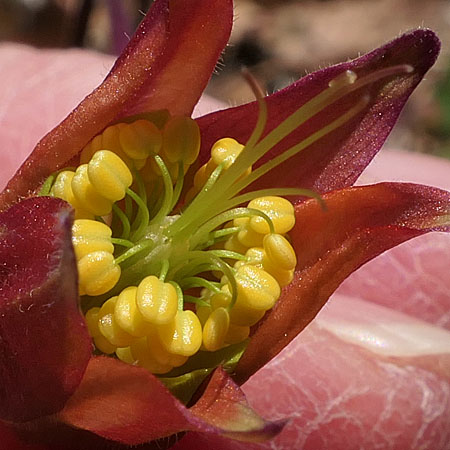
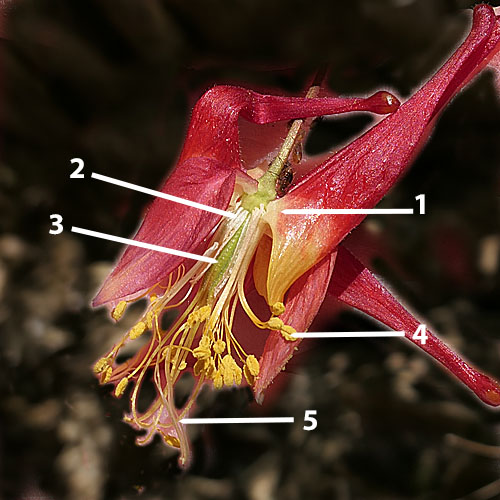
The photo on the left shows a discected flower:
- Petal attachment to flower base/receptacle. Also, a side view of one entire petal
- Split ring of staminodes that surrounding the ovaries. There are two whorls of staminodes, each with 5 staminodes.
- Green ovary.
- Anther. The stamens may look disorganized. However, they are organized into 9 whorls of stamens, with 5 stamens each and 4 of the whorls are interleaved with the longer other 5!
- Style & stigma. In the mature flower, they are much longer than the stamens.
Staminodes have been found in almost all columbines (Aquilegia) and in A. canadensis. These staminodes have been called 'novel organs' and are different than staminodes found in other plants. They are thought to protect the early carpels/pistil from herbivory or pathogen infection. Photo below shows the staminodes in a flower that has shed its sepals, petals and its stamens. The staminodes will be shed next with fruit development.
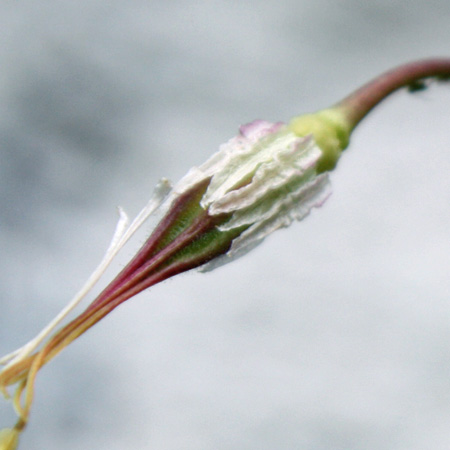
Fruit
Fruit
After fertilization, the sepals, petals, stamens, and staminodes fall off the flower. Each of the ovaries of the five carpels/pistils mature and expand to form a dry structure called a follicle that opens releasing its shiny black seeds. The follicles are about 1.5 inches with the long beak about half the total length. As the ovaries mature, the flower becomes erect with the follicles facing upward. The follicles have long beaks from the styles/stigmas Each ovary generates multiple seeds.
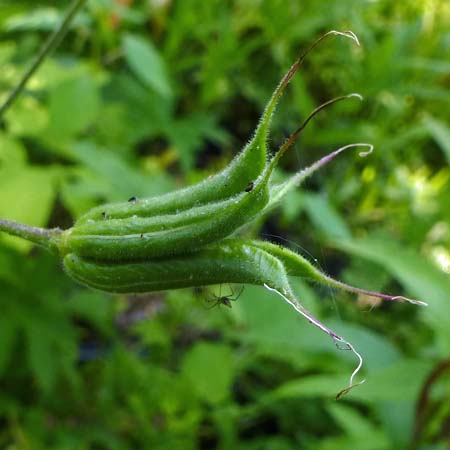
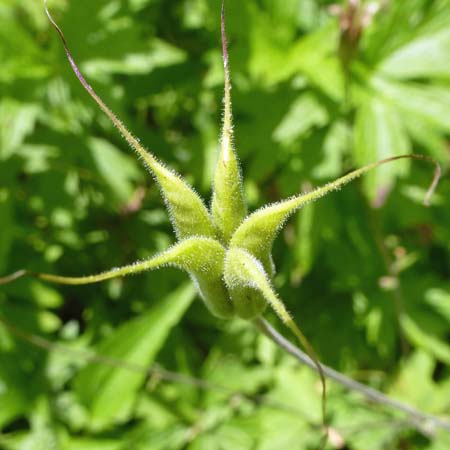
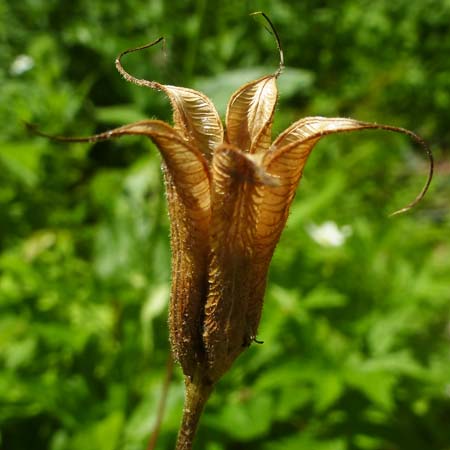
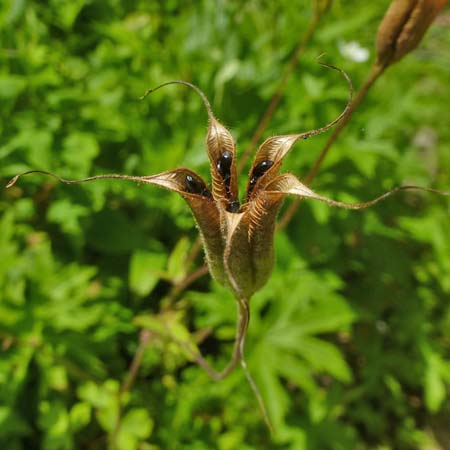
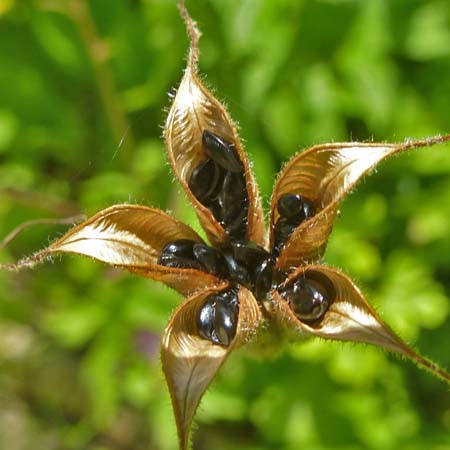
Leaves
The eastern columbine leaves are ternately compound meaning 3 leaflets. The plant has basal leaves and cauline (stem) leaves that are alternate. Both the basal and cauline leaves are morphologically similiar. Basal leaves generally have longer petioles (leaf stalks) than the cauline leaves.
A single leaf with 3 leaflets: The leaflets are up to 2.5 inches wide and long. They are notched and lobed. Sometimes the leaflets are deeply cut and look like a separate leaflet.
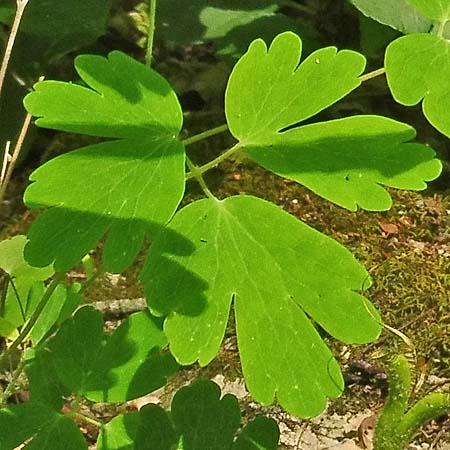
Basal leaves
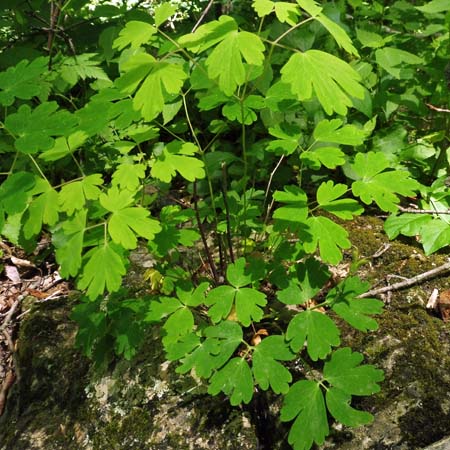
Cauline leaves have shorter petioles and are sometimes sessile.
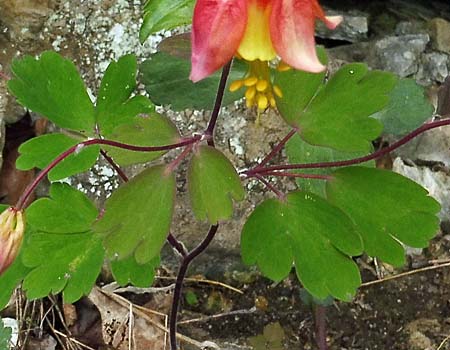
Leaves close to the flowers are sometimes reduced without lobes or notches and lancelate.
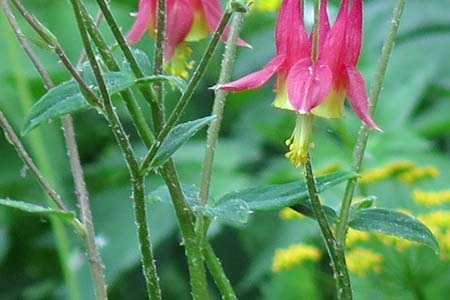
Plant & Habitat
Eastern columbine plants are herbaceous and perennial but are not long lived. They are 1 to 3 ft tall, upright with little branching. The tops of the slender stems produce single flowers or in groups of 2-3.
In nature eastern columbine can be found in woods and in rocky outcroppings and ledges. It is always a treat to spot these delightful delicate flowers along the trail. These plants also grows well in gardens too.
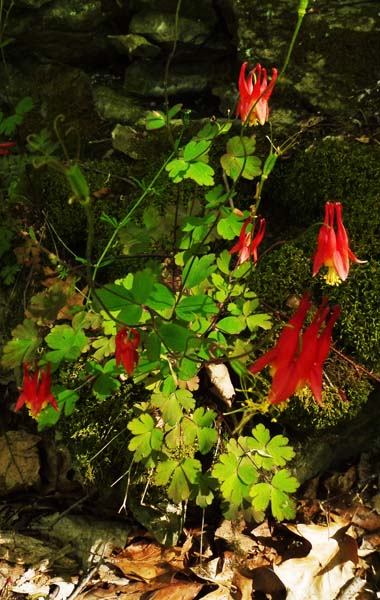
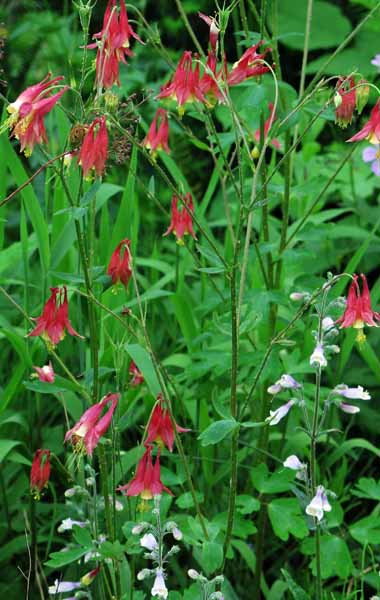
The foliage is toxic so there is limited mammalian herbivory. The plants easily form hybrids with other columbine species.
Text by Millie Ling and all photos by Hubert & Millie Ling. Photos: cultivation & Sussex County, flowers taken in May.
Additional information / References
Additional information / references:
- Description: https://www.missouriplants.com/Aquilegia_canadensis_page.html
- Description: https://vnps.org/1998-columbine-aquilegia-canadensis/
- Developmental and molecular characterization of novel staminodes in Aquilegia, 2020 https://academic.oup.com/aob/article/126/2/231/5739953?login=false
- Excellent gardening information: Jersey Friendly Yards https://www.jerseyyards.org/plant/aquilegia-canadensis/